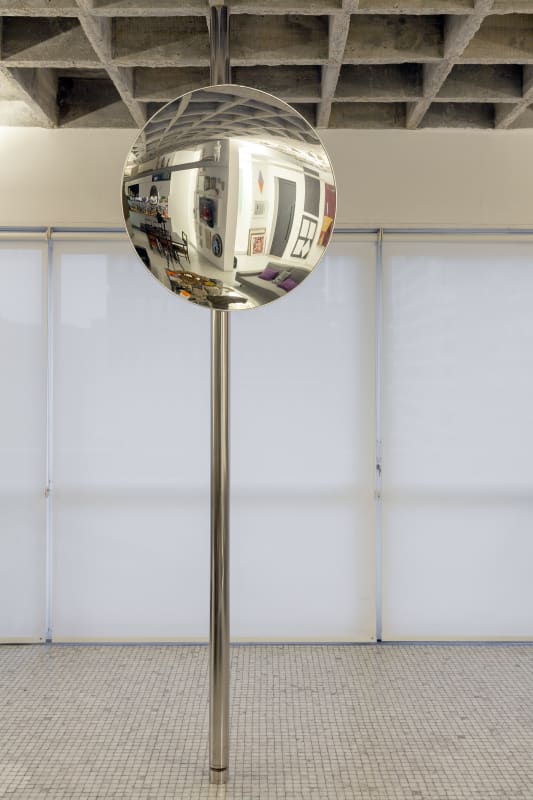Ana Maria da Silva Araújo Tavares (Belo Horizonte, MG, 1958). Sculptor. She began her education at the School of Fine Arts at the Universidade Federal de Minas Gerais - UFMG, between 1977 and 1978. After this period, she moved to São Paulo, where she took a degree in plastic arts at Fundação Armando Álvares Penteado - Faap. She teaches drawing at the same institution from 1982 to 1984. Attends courses with Regina Silveira (1939) and Julio Plaza (1938 - 2003), who influence her experimentalism. Between 1984 and 1986, she took a master's degree at The School of The Art Institute of Chicago, USA. Her passage through this school is remarkable, for it intensifies conceptual issues and imposes new parameters on the development of her work. Since 1993, she has been a professor in the undergraduate program of the Fine Arts Department at the School of Communications and Arts of the Universidade de São Paulo - ECA/USP, where she obtained her doctoral degree in 2000 with the thesis Traps for the Senses: an Experience in the Space-Time of Art. Between 2002 and 2003, she holds a scholarship from the John Simon Guggenheim Foundation, in New York. As of 2002, she teaches a graduate course in visual poetics at ECA/USP. In 2006, she created the installation Enigmas de uma Noite com Midnight Daydreams at Instituto Tomie Ohtake, and developed a large-scale work for the Singapore Biennial.
Ana Maria Tavares began her production amidst the vogue for painting in the early 1980s. In 1983, she participated in the group show Pintura como Meio at the Museu de Arte Contemporânea da Universidade de São Paulo - MAC/USP. Her paintings seek to interact with the surrounding space: the artist arranges her panels seeking to create environments.
In 1984, she moves to the United States, where she takes a master's degree at The School of The Art Institute of Chicago. At the Chicago school, she is encouraged to develop a more spontaneous work and to make use of industrial references and patterns. According to art critic Tadeu Chiarelli, based on her American experience, which lasted from 1984 to 1986, the artist radicalized her dissatisfaction with "the limited spaces of traditional modes."[1] Some installations from this period are shown at Superior Street Gallery in Chicago. In 1986, the sculpture Abrigo para o Sol was built in the garden of Faap. Chiarelli considers the work a milestone in Ana Tavares' trajectory, for "establishing unusual relationships with space".[2] From 1988 on, the artist sought to attribute an even more industrial appearance to her works. Some sculptures resemble design objects, such as furniture, ladders, whips, and others.
In the 1990s, she creates important installations. Some of her environmental works recreate anodyne, passing places, such as airport lounges, roulettes, and waiting rooms. The artist remakes environments that show no distinctive qualities in which people stay for a short time. In these works, the space is invaded by objects that are impersonal and alien to the art gallery.
Notes
1. CHIARELLI, Tadeu. Ana Maria Tavares and the siege of art. In: Arte Internacional Brasileira. São Paulo: Lemos Editorial, 2002. p. 232.
2. Idem. p. 230.
ANA Maria Tavares. In: ENCICLOPÉDIA Itaú Cultural de Arte e Cultura Brasileiras. São Paulo: Itaú Cultural, 2021. Available at: <http://enciclopedia.itaucultural.org.br/pessoa10078/ana-maria-tavares>. Accessed on: June 26, 2021. Encyclopedia entry. ISBN: 978-85-7979-060-7

